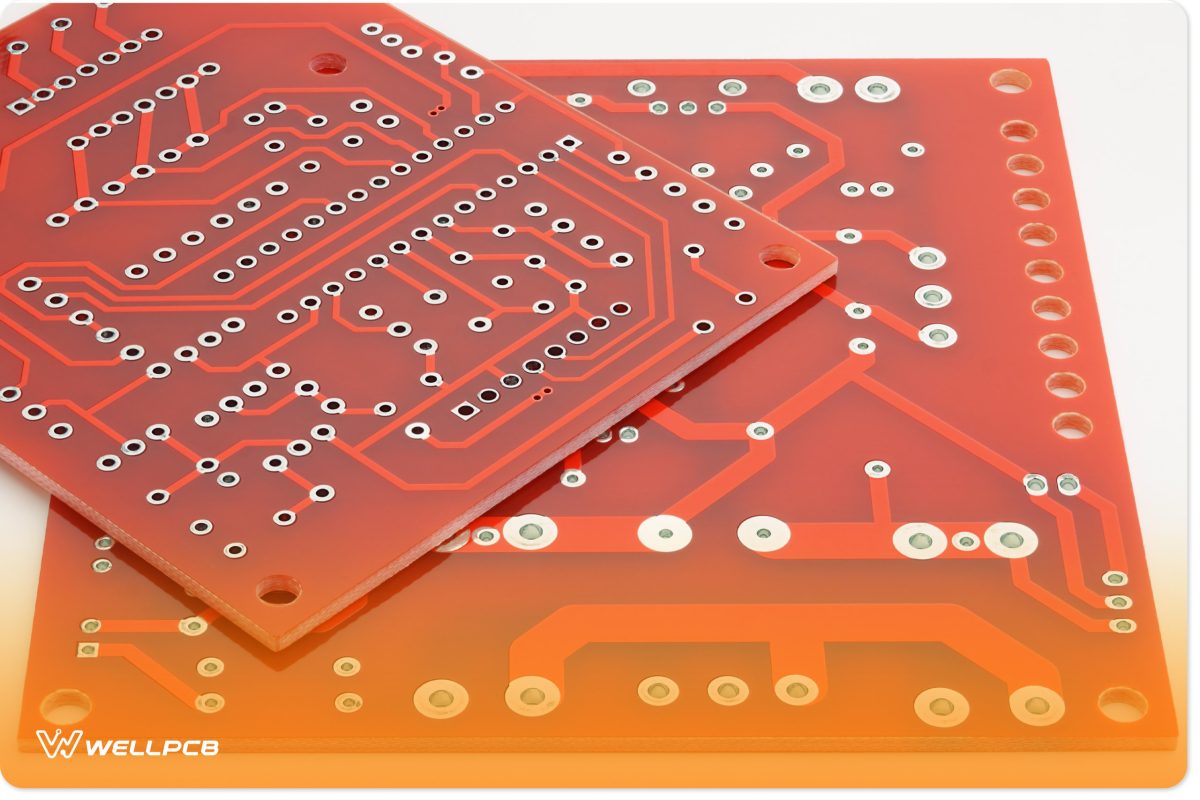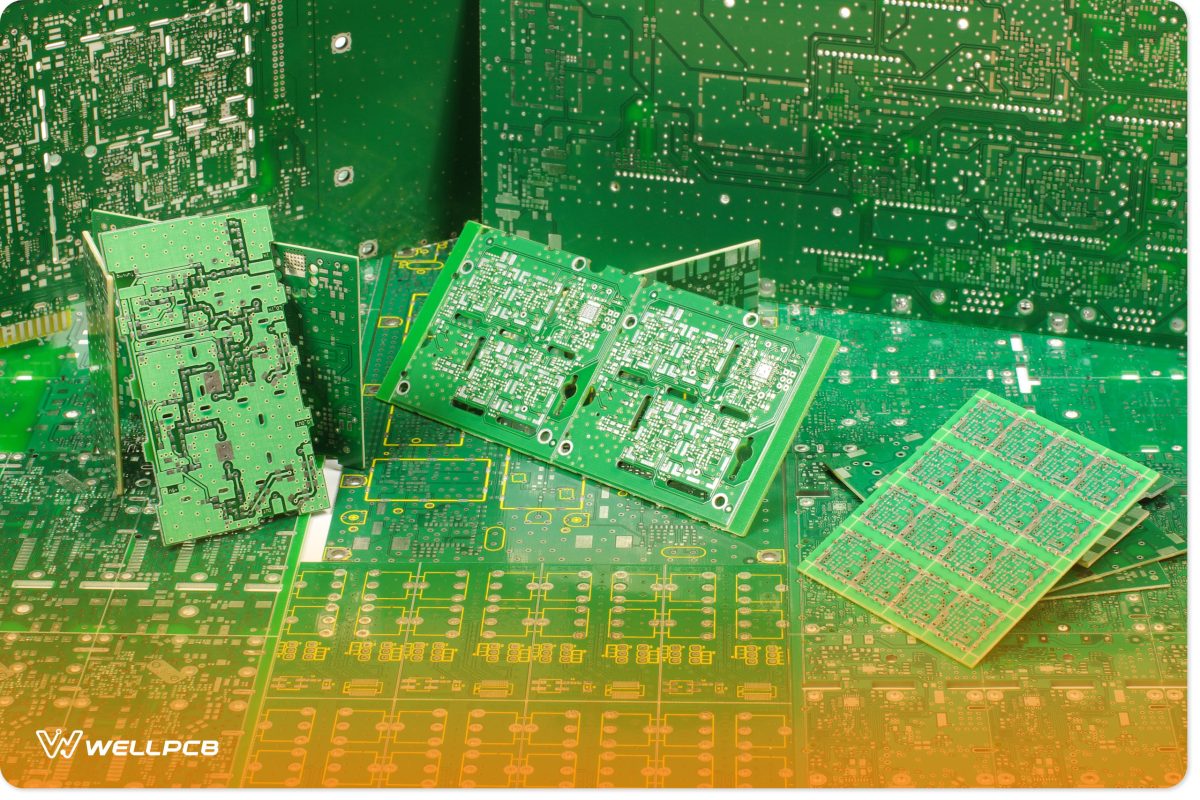Contents
Types of the Circuit Board
Printed circuit boards come in different types because of their characteristics.
The copper rails connecting the different components from their location are very easy to identify.
They are what differ the design for each circuit. But there are also some other major differences.
The special tools required to manufacture PCBs add to their special aspects.
Let’s cut straight to the chase and find out about the types of circuit boards:
Single-Sided PCBs

A single-sided printed circuit board is the least complicated one.
It uses one layer of the substrate, which is the base material.
As copper is a very good electric conductor, one side of the base is filled with a thin yet proper layer of this metal.
After the copper layer, there is a protective solder mask, which adds to the property of this PCB. After this, a silkscreen coat is applied to complete the look of the board.
The name single-sided comes from the organization of the board. The electronic components are all located on one side of the board.
The advantage of this board is that it works best for all simple electric items.
The cost of these circuit boards is less than that of other types, and they can easily be produced in large quantities.
However, just like a coin has two sides, this PCB has limitations to low-electricity items, and that means these boards do not work best for all products.
Double-Sided PCBs
Double-sided printed circuit boards are more common because of their high usage properties,
In this, both the bases have a metal layer, and the parts connect to both sides. The electric components are spread evenly on the whole board.
The holes in the board are added to make things easier. The two ways to do this are surface mount and through-hole technologies.
The first type involves tiny wires called leads to slide through the hole and go to the other side.
The latter, on the other hand, does not include any wires.
Instead, in this type, the PCB includes numerous small leads soldered on.
This technology increases the board’s efficiency, allowing it to perform more functions in less time and space.
The advantage of a double-sided PCB is that it is less weight and does more work at a time. The disadvantage is that it is dangerous to handle.
Multilayer PCBs

The multilayer printed circuit boards are using the latest technology in double-sided boards.
The board has more than two substrate layers, and insulating materials are used on every layer.
The same technologies connect the various components on the board just as in the double-sided boards.
The main advantage of the multilayer board is that it saves more space than the previous types.
You can add as many layers as you want.
In summary, multiplayer boards are more technical, and if you get one thing wrong, your whole board becomes useless.
Rigid PCBs
The printed circuit boards are not just categorized based on their layers and sides.
While it is true that the main difference is the number of layers, this is not the only difference.
The rigid PCB is made because of the varying rigidity it has.
When you first imagine a PCB, you will probably form the image of a rigid PCB.
This type of circuit board uses solid, inflexible, and strong substrate material.
Fiberglass is the best option as it keeps the board from bending and prevents damage.
Flex PCBs
Flex is short for flexibility in this printed circuit board type.
As you can probably already guess, the flex PCB uses a WellPCB that offers DC motor controllers in both domestic and international markets.
We have a flexible plastic that is layered on the base.
This substrate material allows the board to fit into different shapes according to your needs. You can easily bend this board and keep it safe in all conditions. The disadvantage of this board type is that it is more costly than the other designs. However, the advantage is that these boards are very light in weight and are used in all the latest equipment.
Rigid-Flex PCBs
The last type, the rigid-flex printed circuit boards, are both rigid and flexible. It is a confusing concept, but the main idea behind these boards is that you use them with items that require a strong board. However, it is still flexible. The circuit board is rigid, but it connects to a layer of the flex circuit board. The disadvantage of these boards is that they are very complex to make. However, they are also the most useful and can address most needs.
Now, moving forward let’s get to know about the points that are imperative to keep in mind while or before selecting a certain type of circuit board for your particular requirements. So, without further ado, let’s see what should be remembered before getting a circuit board:
Types of the Circuit Board – Factors to Consider When Choosing
When choosing a board type, there are some factors that you must consider. These are very important to understand.
| Consider the materials you will use to design your PCB or buy one |
| The main instruments you will need for the PCB |
| Where you will use the PCB the most |
| The prices of the various types and your budget allowance. |
| The strength and power of your circuit board and how important it is |
| Remember all the design rules when you are building the board |
| Do not forget to consider any element |
| Check, and then re-check to see you are not leaving something out |
Conclusion
Our company can help you pick the exact circuit board that matches your requirements. We offer several products for your needs like manufacturing PCB and assembly PCB.
When you go for a printed circuit board shopping, various things might get you confused. Whether you are going for a single-sided PCB, a double-sided PCB, or any other type of PCB, You can contact us, and we will be happy to serve you.





